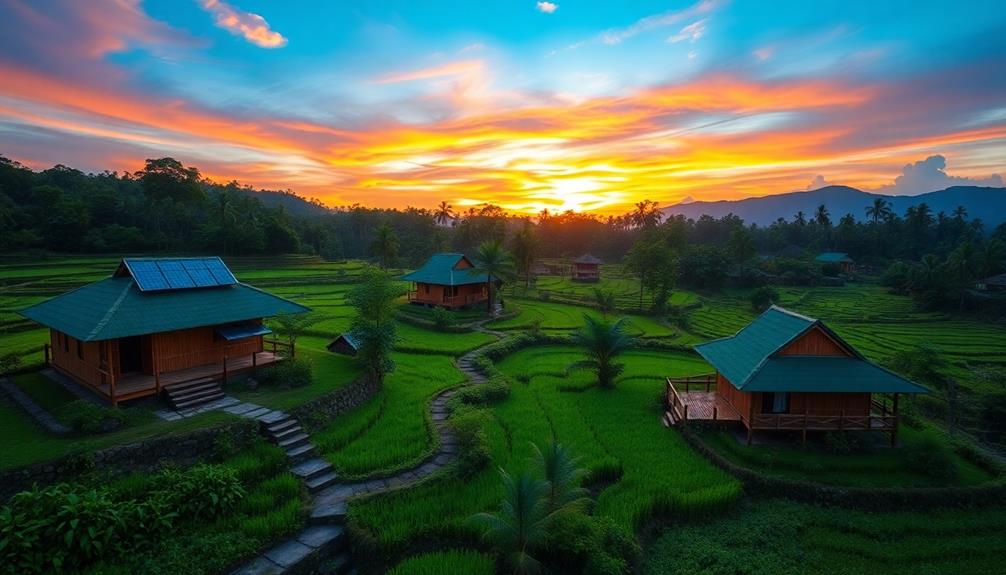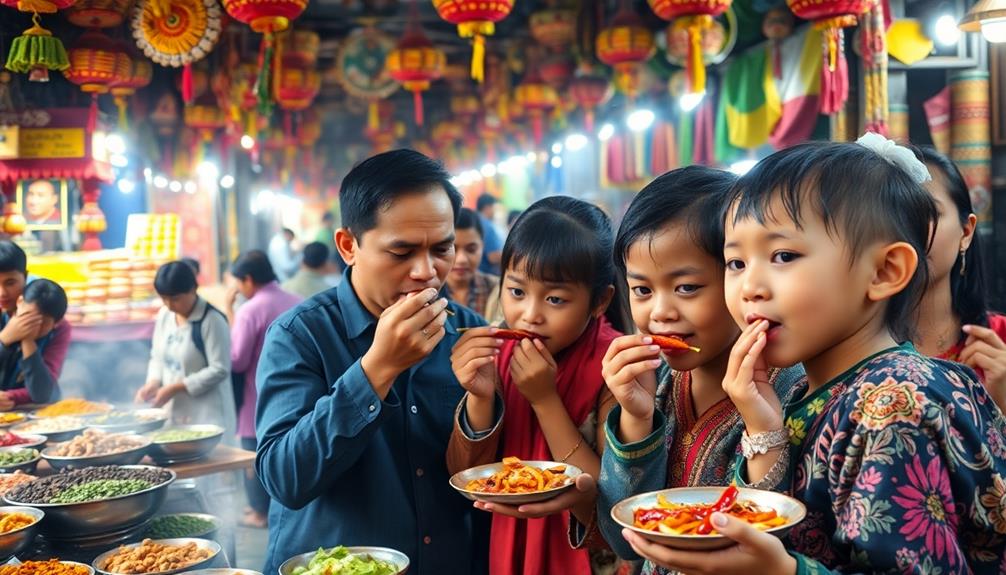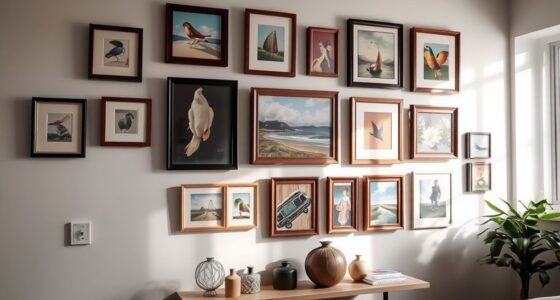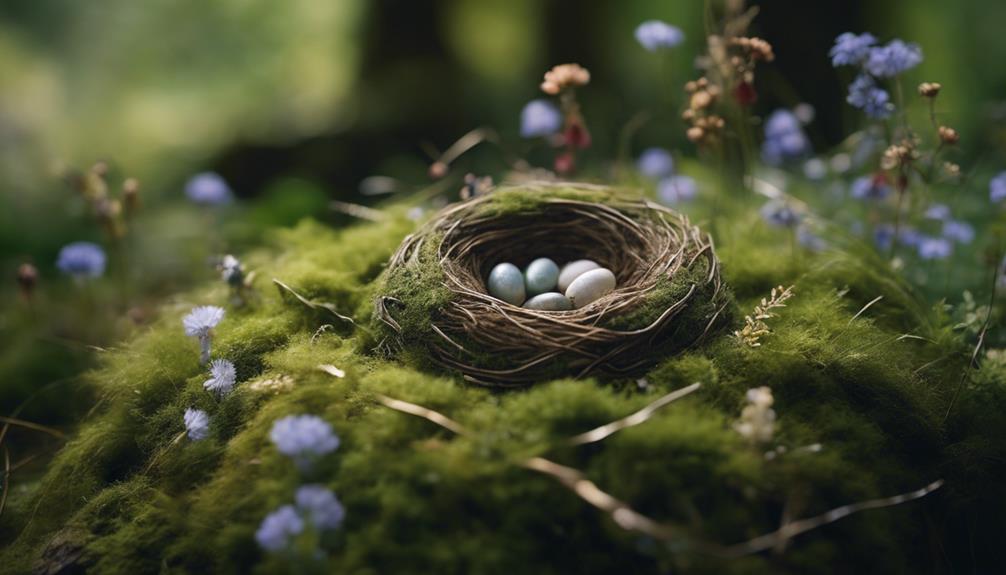In Indonesia, sustainable rural design trends are transforming communities while respecting cultural heritage. You'll see a strong focus on participatory design, where locals co-create their environments, empowering them and preserving their identities. Traditional Ecological Knowledge plays a crucial role, guiding farming practices and promoting ecological balance. This approach not only fosters local pride but also boosts sustainable tourism, which generates economic benefits. Areas like Sabrang Village illustrate these principles, combining natural materials and local craftsmanship. Discover how these trends are shaping the future of rural Indonesia and enhancing the lives of its residents.
Key Takeaways
- Participatory design engages local residents as co-designers, fostering community identity and ensuring designs meet local needs.
- Traditional ecological knowledge (TEK) enhances sustainability and preserves regional identity through culturally rooted practices and natural observations.
- Case studies like Sabrang Village demonstrate successful integration of traditional craftsmanship and modern design principles for economic growth and community involvement.
- Sustainable tourism initiatives leverage cultural heritage, attracting visitors while boosting local economies and promoting environmental conservation.
- Emphasizing community engagement and ecological balance is crucial for revitalizing rural areas and addressing the impacts of industrialization.
Impact of Industrialization on Rural Areas

Industrialization has drastically altered the landscape of rural Indonesia, impacting both livelihoods and cultural traditions. You've likely noticed how mechanized farming methods have replaced traditional agricultural practices, leading to a significant loss of local biodiversity since the Green Revolution in 1968. This shift not only threatens the ecological balance but also diminishes the rich cultural practices tied to farming communities.
Traditional Indonesian housing, often designed to reflect the local environment and cultural values, is also at risk as modernization takes hold, with many communities losing their architectural heritage as a result of urbanization and economic pressures traditional homes and cultural symbolism.
Urbanization policies have exacerbated economic disparities, leaving rural areas struggling. With a rural poverty rate of 12.36% as of September 2022, many rural communities face increasing unemployment and school dropout rates. The focus on profit and efficiency in modern agriculture often neglects the needs of these communities, fueling social change that further isolates them from their cultural roots.
In this landscape, the necessity for sustainable development becomes clear. Supporting design practices that honor traditional methods while promoting ecological balance is essential for revitalizing rural areas. By fostering community engagement and sustainable practices, you can help bridge the gap between industrialization and the preservation of Indonesia's rich cultural heritage, creating a more equitable future for rural communities.
Participatory Design in Community Development
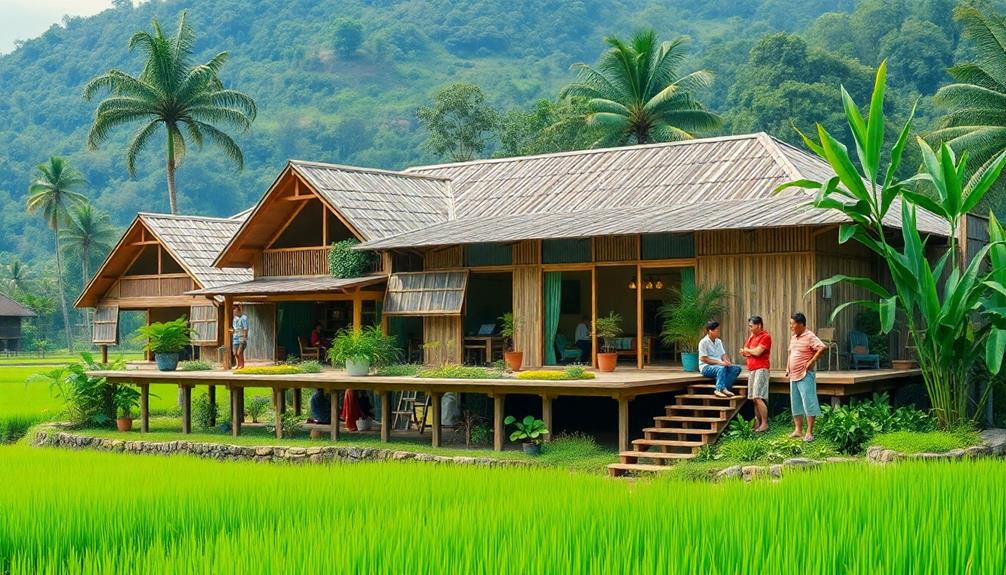
Participatory design transforms community development by actively engaging local residents as co-designers in the process. This approach empowers you and your neighbors, enhancing local narratives and identities while fostering collective decision-making.
By incorporating elements of Indonesian decorative pillows into community spaces, designs can reflect cultural heritage and enhance aesthetics. Through a structured process that includes initiation meetings, treasure mapping, idea generation, craft design workshops, and project reflection, participatory design guarantees thorough community engagement.
Employing ethnographic methods allows for a deep understanding of your community's life and cultural activities, resulting in designs that truly reflect local perspectives and needs. By involving you and your fellow community members in experiential learning, this method supports social innovation and sustainable development, addressing both human and ecological needs.
A recent project showcased the power of diverse collaboration, with 58 participants, including 24 local community members and 28 external stakeholders. This highlights the importance of engaging all voices in the community.
Ultimately, participatory design not only builds a sense of ownership among residents but also leads to solutions that are more viable and relevant. As you participate, you're not just contributing to a project; you're helping shape the future of your community.
Role of Traditional Ecological Knowledge
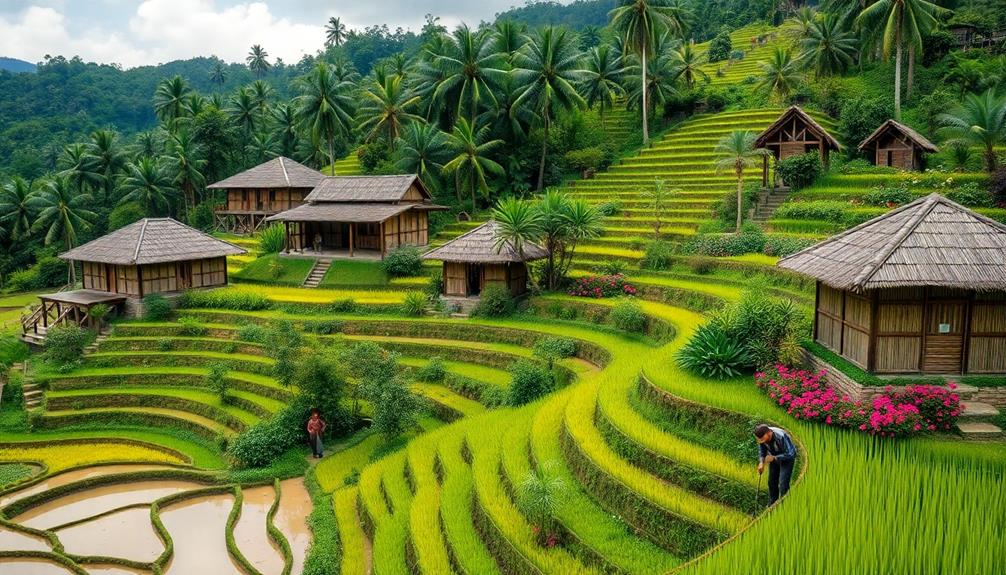
Harnessing the wisdom of Traditional Ecological Knowledge (TEK) is essential for achieving sustainable development in Indonesia. TEK reflects local cultural practices that promote ecological balance and sustainability. By observing natural phenomena through Niteni, farmers adapt their agricultural activities based on seasonal guidelines, enhancing yields while respecting the environment.
| TEK Element | Impact | Community Benefit |
|---|---|---|
| Seasonal Guidelines | Aligns farming with cycles | Increases agricultural resilience |
| Heritage Preservation | Maintains regional identity | Fosters local pride |
| Sustainable Tourism | Promotes eco-friendly travel | Boosts local economy |
Incorporating TEK into participatory design practices empowers communities and strengthens local wisdom. This co-creation of knowledge respects cultural identities and enhances regional development. By integrating these practices, you not only support sustainable tourism initiatives but also create a foundation for long-term ecological stewardship. Embracing TEK is a powerful way to guarantee that Indonesia's rich heritage thrives alongside modern advancements, creating a harmonious future for both the environment and its people.
Social Design and Community Engagement
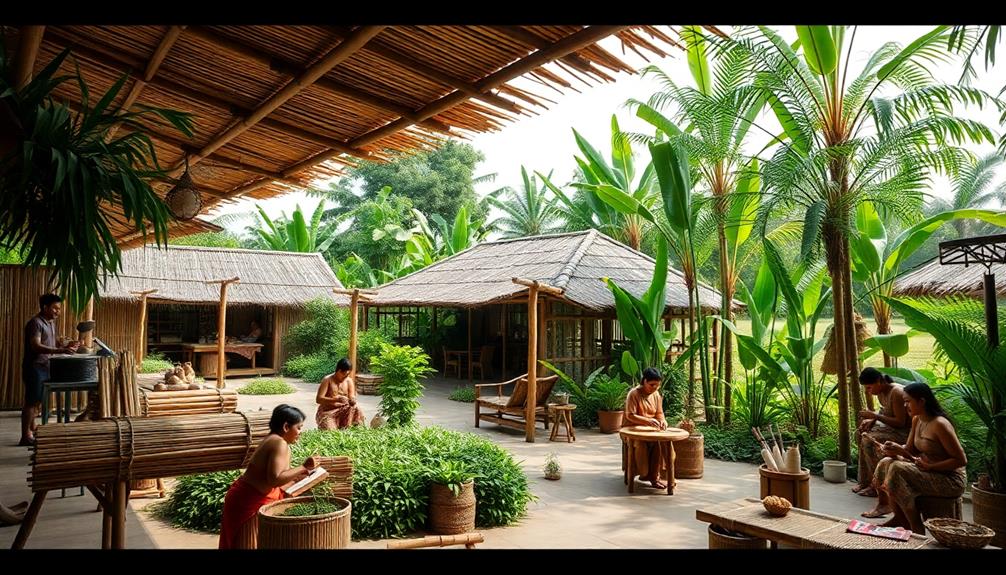
Building on the foundation laid by Traditional Ecological Knowledge, social design plays an essential role in fostering community engagement in rural Indonesia. This approach emphasizes openness and connectedness, driving social innovation and inspiring local communities to collaborate effectively.
By employing participatory design, you actively involve stakeholders, treating them as co-designers. This not only enhances community empowerment but also promotes sustainable regional development. Traditional Indonesian houses, known for their community-oriented layout, further underscore the importance of collaboration and social interaction within these rural settings, reflecting the cultural significance of housing.
Engagement in projects, like one involving 58 participants, highlights how regular consultations with local farmers and government representatives facilitate knowledge exchange and collective decision-making, vital for effective rural development.
Ethnographic methods capture community life and cultural activities, ensuring local perspectives inform design processes and strengthen cultural identity.
Moreover, community engagement through participatory learning encourages experiential knowledge acquisition, equipping residents with the skills necessary for resilience in rural areas.
As you immerse yourself in these processes, you'll realize that social design isn't just about creating structures or systems; it's about empowering communities to shape their environment.
Case Study: Sabrang Village Insights
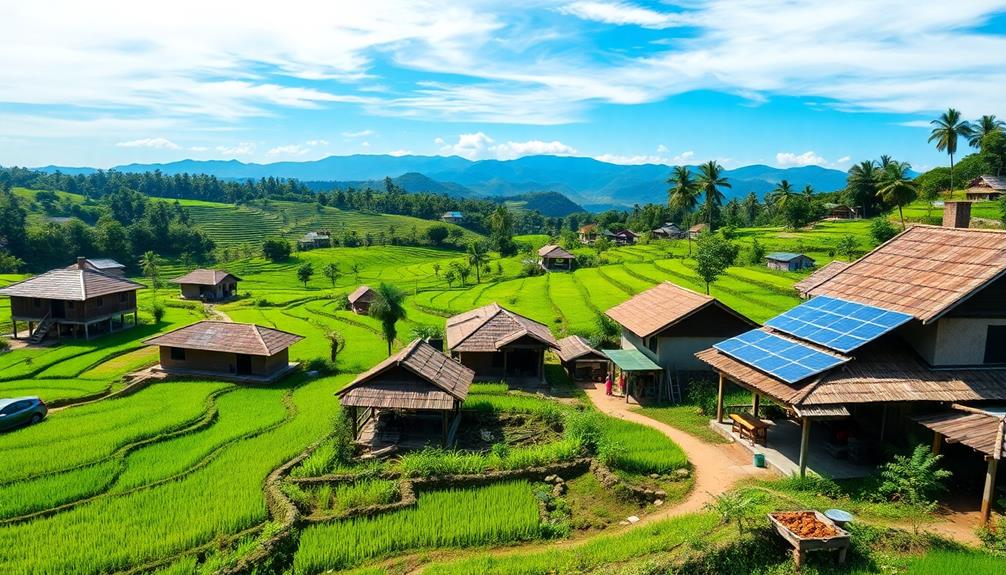
Sabrang Village stands out as a vibrant example of sustainable rural design in Indonesia, where local farmers cultivate rice varieties like Rojolele and Mentik Wangi, producing an impressive 20,395 tons annually.
This thriving community emphasizes sustainable development through identity-making and the integration of local culture into its initiatives. By involving community members as co-designers, Sabrang fosters participatory design that promotes local narratives and collective decision-making.
The emphasis on natural materials and traditional craftsmanship resonates with Balinese design characteristics, enriching the village's identity and sense of place. Traditional ecological knowledge, especially practices like Niteni and Pranatamangsa, plays an essential role in guiding sustainable agricultural practices and preserving local wisdom.
You'll notice how these practices enhance the village's agricultural activities while also reinforcing community bonds. The integration of Japanese design principles further enriches Sabrang's approach, emphasizing bi-directional learning that enhances craftsmanship and community involvement.
This holistic approach not only strengthens Sabrang's economic activities but also highlights its tourism potential. Visitors are drawn to the village's unique blend of tradition and innovation, making it a model for other rural areas aiming for sustainable growth.
In Sabrang, community involvement and respect for local culture create a blueprint for sustainable rural development that other regions can aspire to replicate.
Frequently Asked Questions
What Are the Main Challenges to Sustainable Rural Design in Indonesia?
You'll face challenges like limited resources, inadequate infrastructure, and diverse cultural practices. Balancing economic growth with environmental sustainability is tough, too. Engaging the community and fostering collaboration can help overcome these hurdles effectively.
How Can Technology Support Sustainable Rural Development Efforts?
When it comes to sustainable rural development, technology's your best friend. You can leverage data analytics, renewable energy, and smart agriculture tools to enhance efficiency, reduce waste, and ultimately create a thriving, eco-friendly community.
What Role Do Government Policies Play in Rural Sustainability?
Government policies shape rural sustainability by providing frameworks for funding, resources, and regulations. You'll find that effective policies encourage community engagement, promote eco-friendly practices, and support infrastructure development, driving long-term benefits for rural areas.
How Do Local Cultures Influence Sustainable Design Practices?
Local cultures shape sustainable design practices by embedding traditional knowledge and values into modern approaches. You'll find that community involvement, local materials, and unique customs drive innovative solutions that respect the environment and enhance livability.
What Funding Sources Are Available for Sustainable Rural Projects?
To fund sustainable rural projects, you might explore grants from organizations like the Global Environment Facility. These funds could help implement a community solar initiative, enhancing energy access while promoting eco-friendly practices in your area.
Conclusion
As you explore sustainable rural design trends in Indonesia, you'll find that 80% of the population still lives in rural areas, highlighting the importance of innovative practices. By embracing participatory design and traditional ecological knowledge, communities can thrive amidst industrial pressures. Engaging with locals not only fosters social cohesion but also leads to solutions tailored to their unique contexts. The case of Sabrang Village exemplifies how these approaches can create resilient and vibrant rural spaces for future generations.
